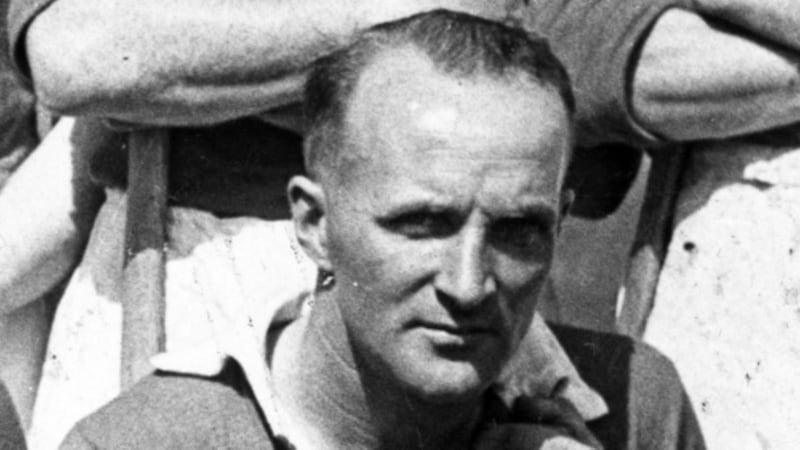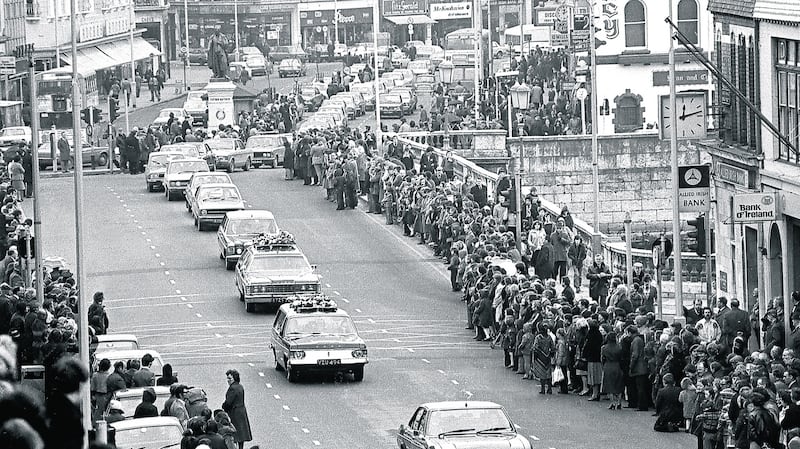A brisk Friday in Beantown, November, 1954. Christy Ring strode to home plate at Fenway Park, hurley in his right hand, sliotar in his left. A gaggle of team-mates stood behind him, watching from the on-deck circle. A photographer squatted down the first baseline, camera poised to capture history. Wearing the unfamiliar baggy uniform of the Boston Red Sox, Ring had been challenged to drive the ball 315 feet off the Green Monster, the 37-foot high wall cum historic monument that stood sentry in left field, preventing home run bombs from detonating on nearby Lansdowne Street.
A publicity stunt dreamt up to garner local media attention and to promote ticket sales ahead of a hurling match against a team of New England All-Stars scheduled for the following Sunday at the same venue.
Joe Cronin, the general manager of the Red Sox, ambled out on to the diamond to see what all the fuss was about and immediately declared Cork ancestry. Smart move. Four times Ring took a couple of steps and swung, four times his efforts arced just short. No harm. No foul. Under the headline, “Fenway’s Left Field Stops Babe Ruth of Irish Hurling!”, the Boston Globe stuck him on the next morning’s front page and acknowledged greatness in the effort.
“The crack of the bat and the speed with which the ball took off spoke for the split-second timing that put his wrists, back and legs into the swing as he hit,” wrote Pat Harty. “Whatever Ted Williams or Babe Ruth had in the way of timing, this lad has.”

As the 100th anniversary of his birth looms this month, a sift through the archives reveals comparisons with baseball’s most inimitable icon to be a recurring theme in coverage of Ring during his visits to this country throughout the 50s and 60s. Never mind that, unlike the teetotalling, daily communicant from Cloyne, Ruth was a celebrated sybarite, a vulgarian of prodigious appetites. Invoking the greatest Yankee’s on-field excellence was still the easiest way to try to translate the Irish visitor’s singular greatness for the native audience.
“He is to his game what Ruth was to baseball, what Jack Dempsey was to boxing, Bobby Jones to golf, Bill Tilden to tennis, Jim Thorpe to football,” wrote Red Smith, the pre-eminent sports columnist of the day, in the New York Herald-Tribune. “Christy Ring is slightly bigger than a scupper of Guinness. He has small, compact features, bright blue eyes and thinning blond hair. He doesn’t talk much and when he does it’s well to listen sharply, for County Cork softens and broadens his accents, blurring them for American ears.”
Inevitable trace elements of paddywhackery aside, the fact Smith and his journalistic peers deigned the visit of a hurler to be worth covering at all spoke much for the curiosity about Ring around New York. On his arrival for the first time in 1954, beat reporters hung out at the Times Square Hotel to see what all the fuss was about. Having assumed he’d cut the burly jib of an Irish cop “suited to pound a beat in Hell’s Kitchen”, they were slightly taken aback when his physical appearance didn’t quite match the dimensions of his legend.
The New York Times did reckon him “a broth of a lad” but Jack Hand of the Associated Press wondered, bizarrely, if this short man of stocky build was really capable of “handling a hurley like a drum major handles a baton”. For its part, the Globe thought he was the spit of the crooner Bing Crosby, and, a few years later, the same paper wrote, “it would be easier to keep the tide out with a teaspoon than to stop Ring from scoring”.

Beneath a classic shot of him soloing away from a couple of New York defenders, a fledgling magazine called Sports Illustrated chronicled his performance at the fabled Polo Grounds in 1954. Nestling in between a feature on the athletic interests of president Theodore Roosevelt and an essay by golf doyen Herbert Warren Wind, there was a valiant attempt to explain the nature of the genius who’d just hit town.
“Nicholas Christopher Michael Ring is a balding, 33-year-old Irishman with a broad back, strong legs and hands that could choke a bear,” gushed the unnamed author. “He is also the greatest practicing exponent of the ancient Irish game of hurling, and, according to some, the greatest ever.”
Even in his mid-40s, when he came out for the Cardinal Cushing Games in 1966, the most memorable image of that tour was his pre-match photograph with Bobby Kennedy at Gaelic Park in the Bronx. It was a measure of his enduring celebrity in New York that, during one trip, a consortium offered the oil truck driver a share of the profits if he allowed a pub in the city to be named after him. Somebody who received his first penny pioneer pin in Mrs Motherway’s shop at the age of 11 was only ever going to give one response to that branding opportunity.
“He was his nation’s most gifted player-of-games and its most charismatic,” wrote Bill Gleason in his lengthy obituary of Ring for the Chicago Sun-Times in 1979. “There can be no argument on these points either. But he was more than great, more than talented, more than magical. He was a flesh and blood ideal.”
Gleason knew his stuff.










